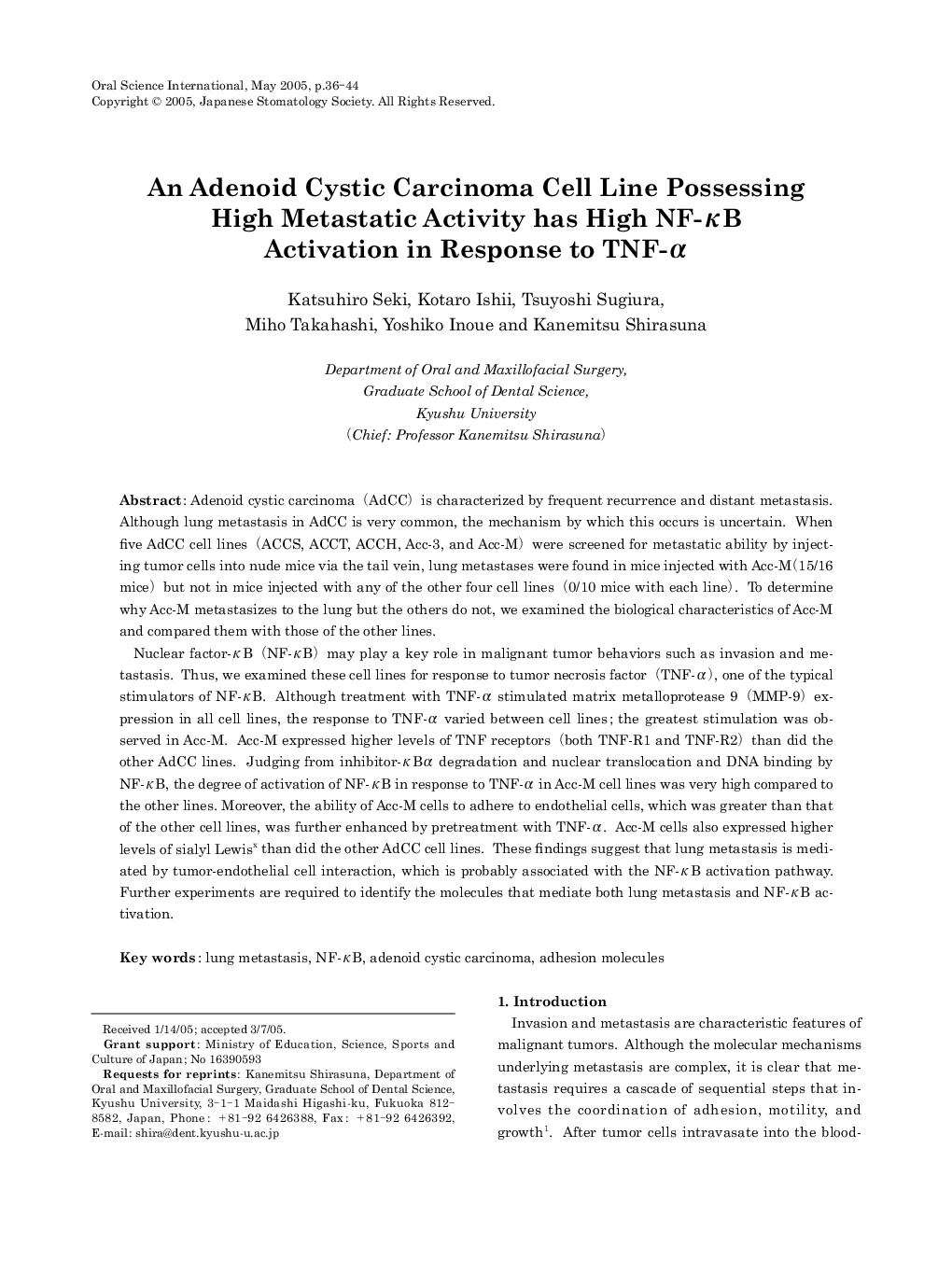| Article ID | Journal | Published Year | Pages | File Type |
|---|---|---|---|---|
| 9103438 | Oral Science International | 2005 | 9 Pages |
Abstract
Nuclear factor-κB (NF-κB) may play a key role in malignant tumor behaviors such as invasion and metastasis. Thus, we examined these cell lines for response to tumor necrosis factor (TNF-α), one of the typical stimulators of NF-κB. Although treatment with TNF-α stimulated matrix metalloprotease 9 (MMP-9) expression in all cell lines, the response to TNF-α varied between cell lines; the greatest stimulation was observed in Acc-M. Acc-M expressed higher levels of TNF receptors (both TNF-R1 and TNF-R2) than did the other AdCC lines. Judging from inhibitor-κBα degradation and nuclear translocation and DNA binding by NF-κB, the degree of activation of NF-κB in response to TNF-α in Acc-M cell lines was very high compared to the other lines. Moreover, the ability of Acc-M cells to adhere to endothelial cells, which was greater than that of the other cell lines, was further enhanced by pretreatment with TNF-α. Acc-M cells also expressed higher levels of sialyl Lewisx than did the other AdCC cell lines. These findings suggest that lung metastasis is mediated by tumor-endothelial cell interaction, which is probably associated with the NF-κB activation pathway. Further experiments are required to identify the molecules that mediate both lung metastasis and NF-κB activation.
Related Topics
Life Sciences
Biochemistry, Genetics and Molecular Biology
Clinical Biochemistry
Authors
Katsuhiro Seki, Kotaro Ishii, Tsuyoshi Sugiura, Miho Takahashi, Yoshiko Inoue, Kanemitsu (Chief: Professor),
